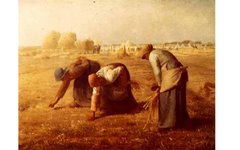Map 1: Mexico and Central America

Map 2: Yucatuan Penusinla, Belize, Guatemala and Nicaruagua
Map 3: Actual Road Trip Route (Yellow & Brown Line) and Flight Route (Pine Line)
My Space to Remember, Reflect and Recharge.

Map 2: Yucatuan Penusinla, Belize, Guatemala and Nicaruagua
Map 3: Actual Road Trip Route (Yellow & Brown Line) and Flight Route (Pine Line)










 Our first stop was the Hol Chan Marine Reserve. We each paid $10 to the patrol ranger for parking the boat in the Reserve. Our guide, Albert, emphasized that we should follow him closely in the water. After putting on snorkels and fins, one by one, we jumped into the sea. The water was pleasantly warm and clear! Schools of fish swam next to snorkelers. I could almost feel their touch when they swam by me. The coral reefs were not as colorful as what I had seen in waters near Thailand (Co Phi Phi). Then again, we only saw a tiny part of long barrier reef that Belize is famous for. There are many brain corals (they literally look like a brain except that it's hard!) and fan-shaped purple-colored corals. I got a couple of scratches when swimming too closely to corals. My favorite part was gazing down at a deep valley - I felt as if I was skydiving except that I was floating and supported by cozy, clear and warm water. There are a couple of holes in the valley and a couple of snorkelers dipped into the hole to see what's in there. Michael was doing quick dips into the deeper level of the sea to see better - something I haven't learnt to do. I wish our guide had pointed out some interesting marine life down there.
Our first stop was the Hol Chan Marine Reserve. We each paid $10 to the patrol ranger for parking the boat in the Reserve. Our guide, Albert, emphasized that we should follow him closely in the water. After putting on snorkels and fins, one by one, we jumped into the sea. The water was pleasantly warm and clear! Schools of fish swam next to snorkelers. I could almost feel their touch when they swam by me. The coral reefs were not as colorful as what I had seen in waters near Thailand (Co Phi Phi). Then again, we only saw a tiny part of long barrier reef that Belize is famous for. There are many brain corals (they literally look like a brain except that it's hard!) and fan-shaped purple-colored corals. I got a couple of scratches when swimming too closely to corals. My favorite part was gazing down at a deep valley - I felt as if I was skydiving except that I was floating and supported by cozy, clear and warm water. There are a couple of holes in the valley and a couple of snorkelers dipped into the hole to see what's in there. Michael was doing quick dips into the deeper level of the sea to see better - something I haven't learnt to do. I wish our guide had pointed out some interesting marine life down there.









OK, That's Belize's history in one page!
